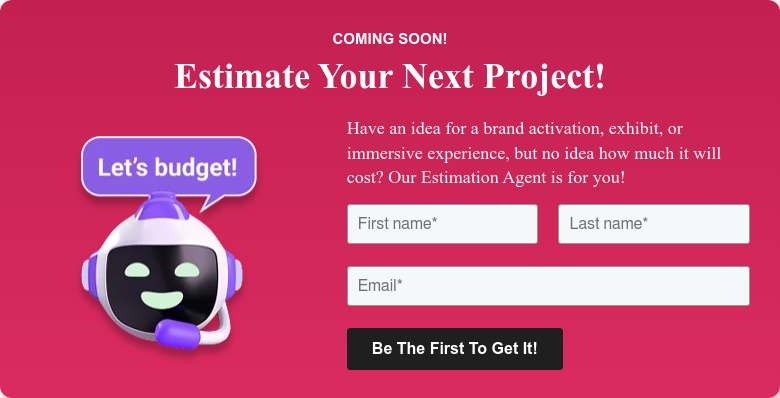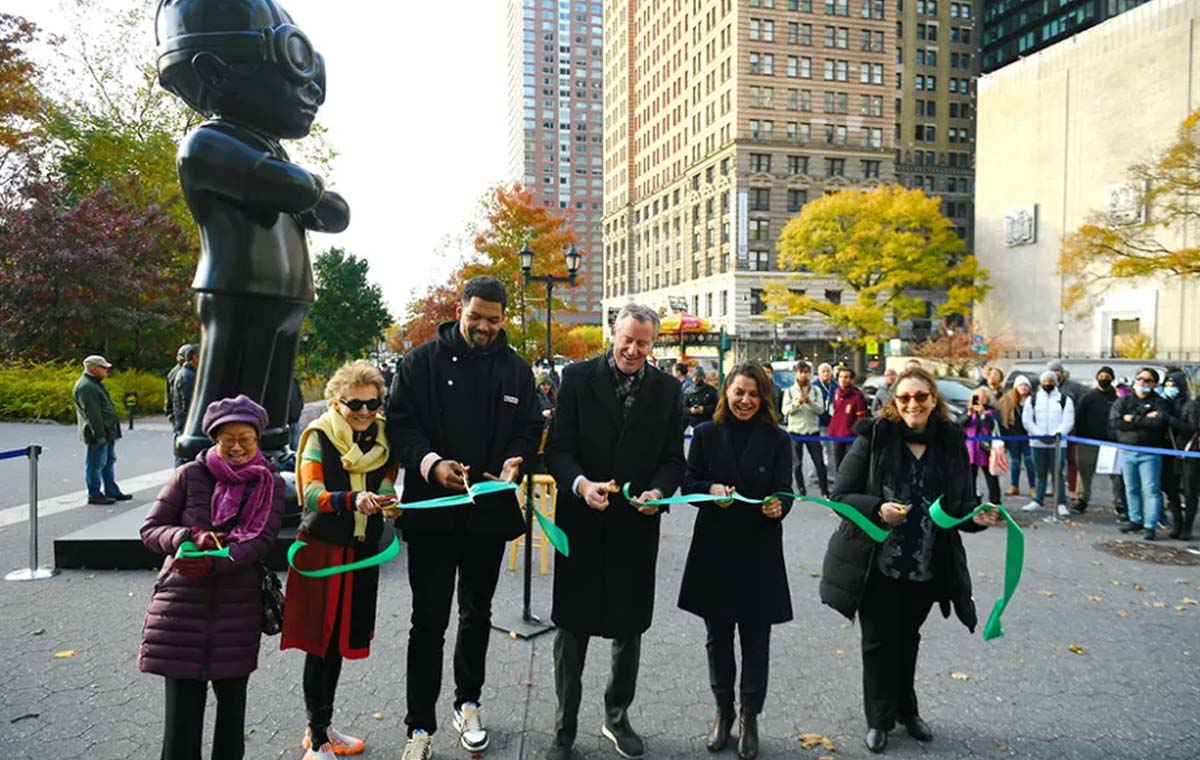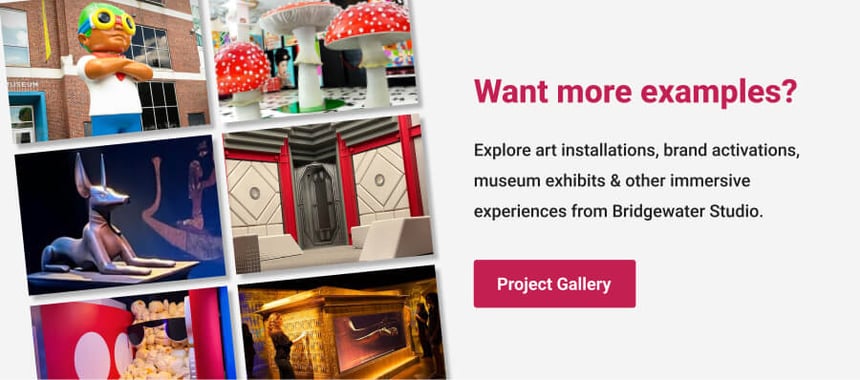Whether it’s Cloud Gate, aka “the Bean” in Chicago, one of Nashville’s Instagram-worthy murals, or Hebru Brantley’s oversized Flyboy sculpture in New York’s Battery Park – public art installations have the capacity to transform ordinary spaces into extraordinary experiences leaving a lasting impression on all who encounter them. Done well, these public displays work in concert with their surroundings, complementing the existing architecture or environment and telling the story of a place's culture, history, or values.
However, while integrating public art may fill your mind with endless creative possibilities, bringing your vision to life can be daunting. The complexities of design, fabrication, logistics, and installation can quickly turn a dream project into a stressful experience filled with unplanned surprises that hinder the final result.
In this article, we'll share insights from decades of experience to help you navigate the world of public art installation smoothly and efficiently. Below, find the knowledge and tools to ensure a stress-free, awe-inspiring public art installation that exceeds expectations.

What is Public Art?
At the most basic level, public art is any artwork in the public realm. And although large outdoor sculptures are often the first thing that comes to mind, public art also includes murals, graphics, digital installations, immersive experiences, projections, and even live performances. Some public art is incorporated into the architecture itself. Other public art is more ephemeral. Additionally, public art can occur indoors and outdoors and be permanent and temporary. It can be interactive and participatory or simply observed. The key is that it is free and accessible to all.
Tips for a Stress-Free Public Art Installation
Pulling off a successful and stress-free art installation begins in the planning stages. As your department, city, or cultural institution begins developing concepts it’s essential to consider what your goals and objectives are. What is the art intended to convey? Who is it for? Where will it be located? These intentions shape other vital considerations such as what kind of art best suits that purpose. Will it be temporary or permanent? Where, within the site, will the art live? How will visitors engage with it?
The location, duration, and environment surrounding your public art display will dictate what materials are most appropriate because durability and longevity requirements differ depending on whether the project will be indoors or outdoors, permanent or temporary. Permanent installations call for more durable and less reactive materials, like metal or stone, while temporary installations can be made of wood, plastic, or even foam. Once you’ve defined your goals and have a location and medium in mind, these decisions will also drive the choice of the artist. Depending on your vision and intention for the project you may want to highlight a lesser-known local artist or elevate a local space with art from an international maker.
Next, consider the logistics. Permits, insurance, licenses, and permissions will likely need to be secured to bring your concept to life. Know who the key partners are in the project and make sure their concerns are addressed. Don’t launch into art fabrication until all these administrative details are managed.
Finally, consider installation logistics in the design phase. Visit the site in person. Understand how it will be accessed by guests. Consider how the installation will need to be delivered, assembled, and finished on-site. It goes without saying that public art is going into a public space, so how will safety concerns be addressed? Will streets or sidewalks need to be closed? Carefully thinking through each stage of transport and installation will help prevent headaches on the big day.
Thorough planning, detailed conceptualizing, and strategic designing of your public art installation are key to ensuring that on the day of installation – everything goes smoothly and seamlessly. The devil is truly in the details. Without a plan, even the most ambitious art installation can fail to live up to its potential.
As a full-service design and fabrication company with years of experience working alongside visionary artists, architects, and cultural institutions, we have witnessed the transformative power of public art firsthand. Whether it’s a temporary art installation to reflect a cultural trend or an enduring permanent display conveying timeless values, public art can inspire – connecting people to a place and elevating an environment.
Ready to bring your vision to life? At Bridgewater Studio, our in-house team offers strategy, design, fabrication, shipping, and installation all under one roof. Discover how our proven workflow and full-service approach can benefit your public art project and get a free customized plan by booking a no-pressure introduction today.


.png)
.png)
.png)







